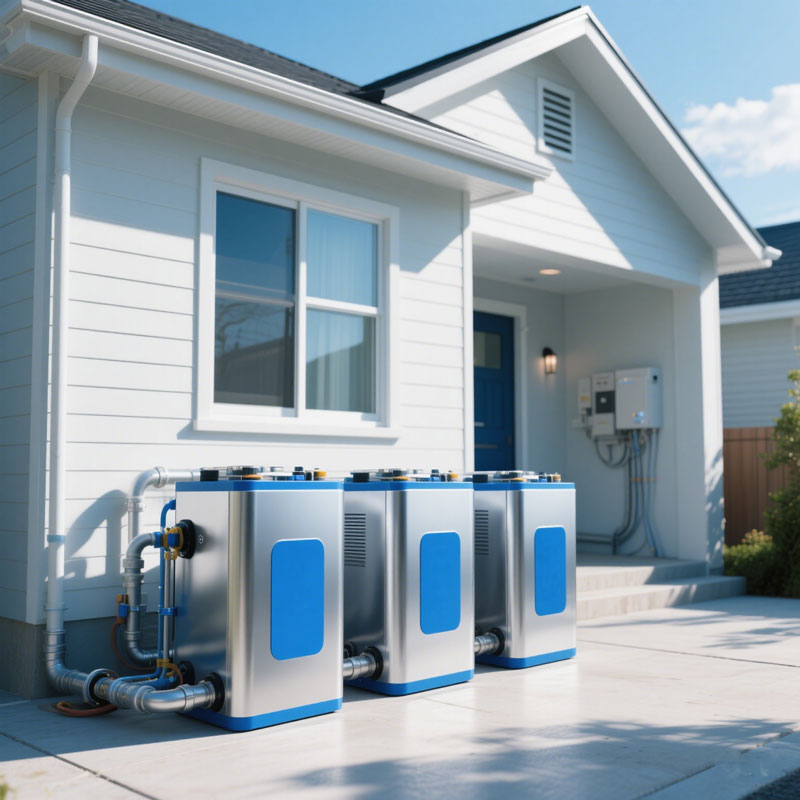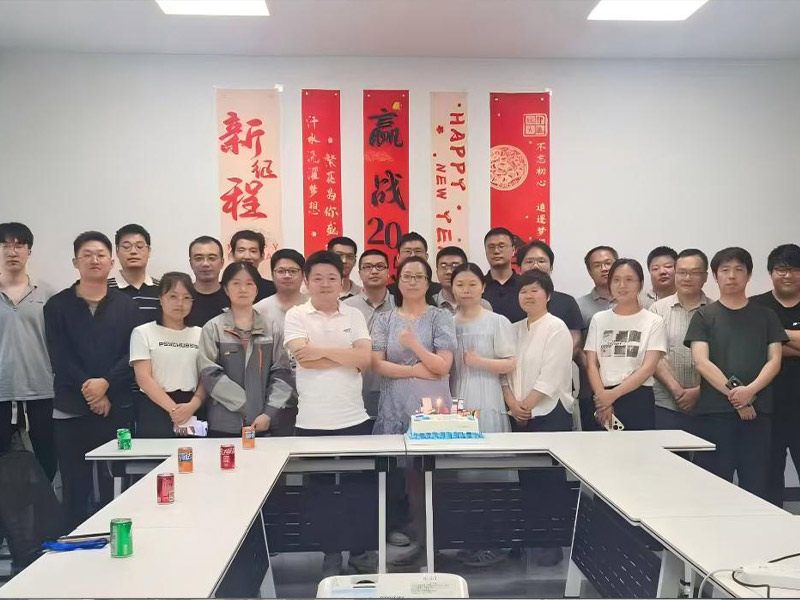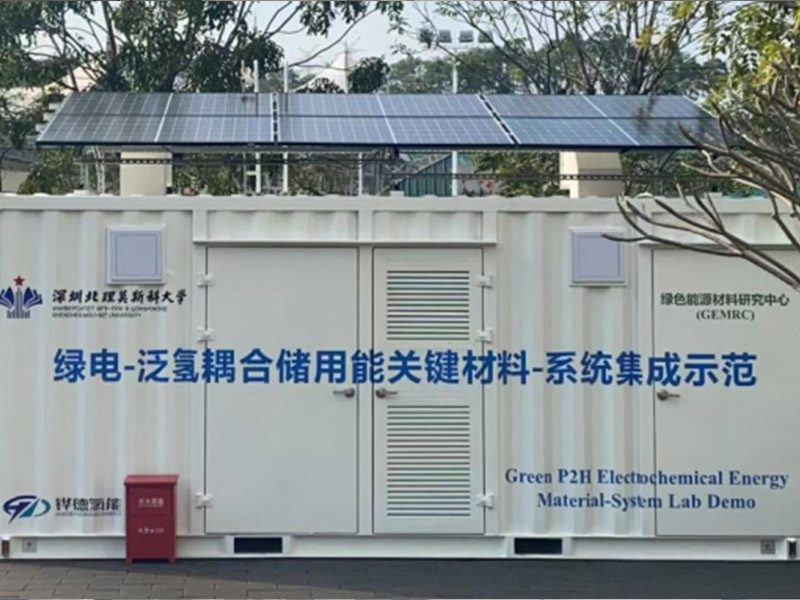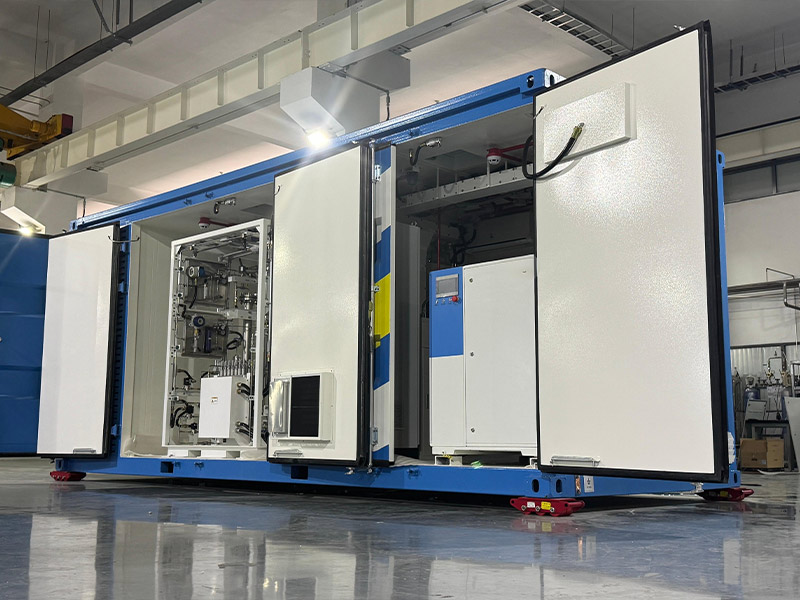As the world transitions to wind and solar power, we face a critical challenge: how to keep the lights on when the sun isn't shining and the wind isn't blowing. While lithium-ion batteries work well for short-term storage, we need long-duration energy storage (LDES) solutions to fully decarbonize our grids. Here's why this technology will make or break our clean energy future.
Key Points
l Solves renewable energy’s biggest flaw by storing excess solar/wind power for use during low-generation periods.
l Enables a fossil-free grid by replacing gas/coal peaker plants with clean, on-demand energy.
l More sustainable than batteries—uses abundant materials (e.g., water, air) and lasts decades without degradation.
l Critical for seasonal energy shifts, like saving summer solar power for winter use.
l Needs policy and investment to scale, but promises a reliable, 100% renewable energy future.

Short-duration batteries, such as lithium-ion, can store energy for a few hours, which is useful for managing daily peaks in demand. But as we integrate more renewables into the grid, we need storage systems that can last for days, weeks, or even months.
LDES can supply power during extended periods of low renewable output—like cloudy winters or windless nights. Sometimes the sun doesn’t shine for days, or the wind doesn’t blow for long periods—especially in winter. When that happens, solar panels and wind turbines can’t make enough electricity. Long-duration energy storage helps by saving extra energy from sunny or windy days and using it later when renewables aren’t available. It’s like keeping leftovers in the fridge—you store what you don’t use now and eat it later when you’re hungry.
Without storage, power companies often have to turn on gas or coal plants when there’s not enough solar or wind energy. These backup plants pollute the air and cost a lot to run. With long-term storage, we can rely less on those polluting plants because we already saved clean energy to use later. This helps reduce carbon emissions and makes the grid cleaner and cheaper.
The power grid needs to stay steady at all times. If there’s too much or too little energy, it can cause blackouts or damage to appliances. Long-duration storage helps balance things out by giving or taking power as needed. This is especially helpful in areas that use a lot of renewable energy or are far from big power stations. It makes the grid more stable and keeps electricity flowing smoothly.
Making the grid greener doesn’t just mean using renewables—it also means ensuring efficiency, reliability, and flexibility. Long-duration energy storage makes that possible by filling in the gaps where renewable generation falls short.
Key Benefits Include:
√ Carbon-Free Backup Power
LDES systems allow renewable energy to serve as a reliable backup, eliminating the need for polluting peaker plants.
√ Maximizing Renewable Usage
Instead of curtailing excess wind or solar energy, it can be stored and used when demand spikes.
√ Reduced Grid Congestion
Storage systems located closer to demand centers reduce the strain on transmission infrastructure.
Solar panels only generate when the sun shines (typically 6-8 hours/day)
Wind turbines are inactive during calm periods
Seasonal variations create supply gaps lasting weeks or months
Current lithium-ion batteries typically provide 4-8 hours of storage
Degrade significantly after 5-10 years
Impractical for seasonal storage needs
Require scarce materials like lithium and cobalt
LDES refers to technologies that can store energy for 10+ hours to several months, bridging gaps in renewable generation. Unlike batteries, these systems:
✔ Maintain capacity for decades
✔ Use abundant, low-cost materials
✔ Scale to grid-level needs
✔ Enable seasonal energy shifting
|
Technology |
Duration |
Advantages |
Challenges |
|
Hydrogen Storage |
Days-months |
High energy density |
Conversion losses |
|
Flow Batteries |
8-100 hours |
Long lifespan |
Large footprint |
|
Thermal Storage |
Hours-weeks |
Uses simple materials |
Lower efficiency |
|
Compressed Air |
10-100 hours |
Proven technology |
Geographic limits |
|
Gravity Storage |
Hours-weeks |
Minimal degradation |
High upfront cost |
As the world shifts toward renewable energy, the power grid must evolve to handle the ups and downs of solar and wind generation. Long-duration energy storage (LDES) plays a critical role in making this transition smooth, stable, and sustainable. It allows clean energy to be stored for hours, days, or even weeks—bridging the gap between supply and demand and reducing reliance on fossil fuels.
In this section, we explore how LDES creates real economic and environmental value, how it integrates with renewable energy projects, and why policy and market support are key to unlocking its full potential.
Long-duration energy storage (LDES) offers significant benefits for both the economy and the environment. Economically, it helps reduce energy costs over time by storing excess electricity when it’s cheap (such as during periods of high solar or wind output) and releasing it when demand—and prices—are higher. This reduces the need for expensive peaker plants and helps balance supply and demand more efficiently.
Environmentally, LDES enables deeper integration of renewable energy by solving the problem of intermittency. Instead of relying on fossil fuels when the sun isn’t shining or the wind isn’t blowing, stored energy can be used to keep the grid clean and stable. This results in lower carbon emissions, better air quality, and progress toward climate goals—all while supporting a more resilient energy system.
One of the most powerful uses of long-duration energy storage is its ability to be used in conjunction with renewable energy projects such as solar farms and wind turbines.
During peak times, renewable energy often generates more power than is needed, and energy storage systems can capture the excess power and store it for later use. This ensures that clean energy is not wasted and is available even when natural resources are scarce.
Solar hydrogen production, solar panels can be used to split water to produce hydrogen. The hydrogen is then stored and converted into electricity when needed, such as at night or on cloudy days. This means that we no longer have to rely on polluting fossil fuels. Instead, we can use clean solar hydrogen to keep the grid running. This is a smarter, greener backup energy source that helps reduce emissions and allows everyone to enjoy cleaner air.
Despite its promise, the widespread adoption of long-duration energy storage depends heavily on strong policy and market support. Upfront costs for storage systems can be high, and without the right financial incentives or regulatory frameworks, developers may be hesitant to invest.
Governments can accelerate deployment through tax credits, subsidies, and funding for research and demonstration projects. Clear market rules that reward flexibility and reliability—like time-of-use pricing or capacity payments—can also make storage more economically attractive. Additionally, long-term policy commitments give investors confidence that storage technologies will play a lasting role in the clean energy transition.
Transitioning to a greener grid requires more than just switching to renewables—it demands a reliable, flexible, and clean energy storage solution. Long-duration energy storage bridges the gap between supply and demand, turning intermittent sources like wind and solar into round-the-clock power. As technology evolves and policies catch up, LDES will become a cornerstone of the sustainable energy future.
To store renewable energy for days or months—bridging gaps when the sun isn’t shining or wind isn’t blowing.
LDES lasts for weeks/months (not just hours), uses cheaper materials, and doesn’t degrade like batteries.
Hydrogen storage, flow batteries, thermal storage, compressed air, and gravity storage.
Yes! It provides clean, on-demand power, reducing reliance on polluting gas/coal plants.
Costs are higher upfront but pay off long-term by maximizing renewable energy use and cutting grid costs.
With policy support and tech advances, large-scale adoption could happen within 5–10 years.


